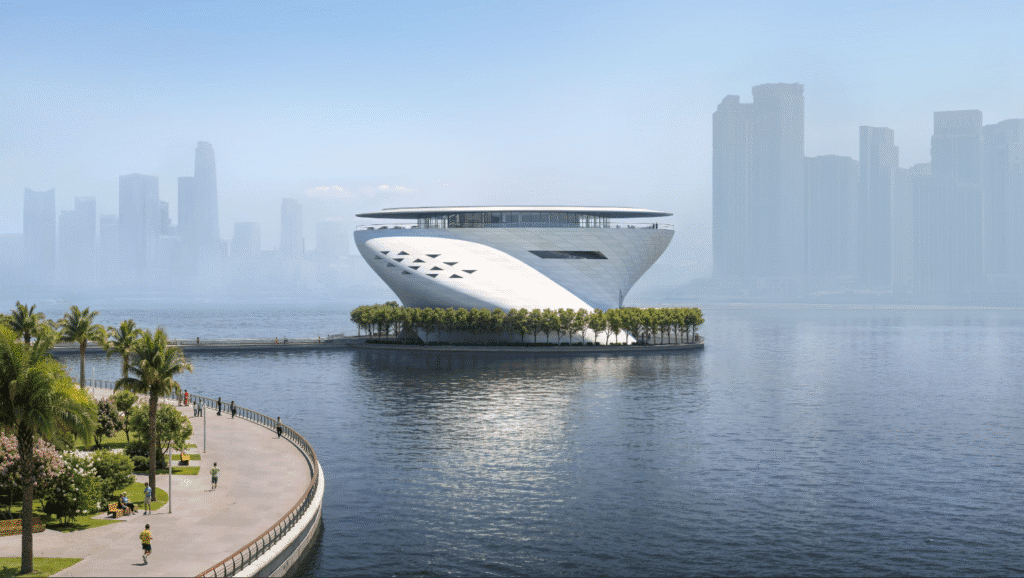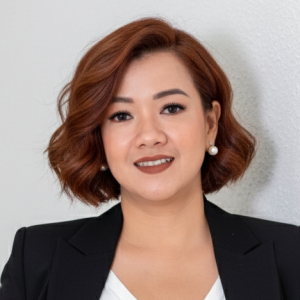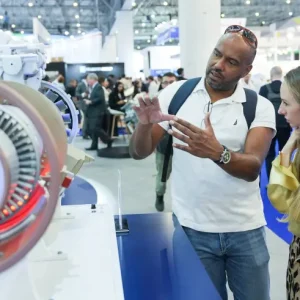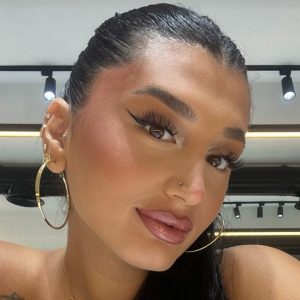The Dubai Museum of Art is the newest and most breathtaking addition to Dubai’s ever-evolving cultural and architectural landscape. More than just a museum, this iconic development marks a major leap in Dubai’s journey toward becoming a global hub for art, design, and innovation. Rising elegantly from the waters of Dubai Creek, the museum stands as a symbol of creativity, ambition, and harmony between tradition and modernity.
From its awe-inspiring design by renowned architect Tadao Ando to its promise of world-class exhibitions, the Dubai Museum of Art, often called DUMA, is poised to become the beating heart of the city’s creative identity.
A Vision Rooted in Culture and Creativity
Dubai has long been associated with innovation, architectural excellence, and futuristic development. Yet, at the core of its evolution lies a deep respect for culture and heritage. The Dubai Museum of Art brings these two worlds together, creating a bridge between the city’s rich history and its dynamic creative future.

The vision behind DUMA is simple but powerful: to create a world-class institution where art, architecture, and human imagination coexist. It’s not just a place to display masterpieces; it’s a living, breathing space where ideas, conversations, and cultures connect.
The museum aims to support artists, inspire visitors, and nurture the creative economy. It will serve as a platform for emerging and established artists to showcase their work, engage with audiences, and collaborate on new projects that push the boundaries of artistic expression.

A Landmark Born from the Sea
The Dubai Museum of Art is uniquely situated on the shimmering waters of Dubai Creek, an iconic location that reflects the city’s origins as a trading port and pearl-diving hub. The site itself holds symbolic value, representing both the flow of time and the continuity of Dubai’s story.
Architect Tadao Ando drew inspiration from two key elements deeply connected to the city’s heritage: the sea and the pearl. The circular design of the museum resembles a giant seashell, a tribute to the region’s pearl-diving history. At its core, the structure features an open cylindrical void that allows sunlight to cascade through the heart of the building, symbolizing the glow of a pearl emerging from the ocean’s depths.
This design not only connects the building to its surroundings but also creates an atmosphere of calm, balance, and reflection. The interaction between light, water, and architecture transforms every visit into an emotional and sensory experience.
Architectural Brilliance: A Dialogue Between Nature and Design
Tadao Ando’s design philosophy revolves around minimalism, harmony, and a deep respect for nature, all of which are clearly visible in the Dubai Museum of Art. The museum appears to float gracefully on the water, creating the illusion of weightlessness despite its monumental presence.
The exterior of the building is sleek and curved, with smooth concrete surfaces that reflect the natural light of Dubai’s sun. Inside, the interplay of light and shadow creates a constantly changing visual experience, giving each visitor a sense of movement and discovery.
The museum rises five storeys above the water, with each level serving a distinct purpose:
- Basement and ground levels house support facilities and technical spaces
- First and second floors are dedicated to art exhibitions and installations, featuring flexible gallery layouts adaptable to various artistic styles and media
- Third floor hosts a high-end restaurant and a VIP lounge, offering panoramic views over the water and the Dubai skyline
- Upper levels and roof areas provide spaces for events, workshops, and outdoor art displays, connecting visitors directly with the surrounding environment
What makes the Dubai Museum of Art truly special is its ability to merge function with symbolism. Every element, from the circular walls to the reflective pools and open sky, contributes to a larger narrative of continuity, connection, and creative flow.
Inside the Museum: A World of Artistic Exploration
While the architecture itself is a masterpiece, the true soul of the Dubai Museum of Art lies in what it holds inside. The museum will feature a wide range of exhibits that span modern and contemporary art, with a focus on both regional and international artists.
Modern and Contemporary Art Galleries
The main exhibition halls will feature curated collections of paintings, sculptures, digital art, and immersive installations. These exhibitions aim to showcase the evolution of art in the Arab world while also connecting Dubai to the broader global art scene.
Interactive and Immersive Installations
DUMA is designed to be more than a space for viewing art; it’s a space for experiencing it. Visitors will encounter large-scale interactive installations that engage multiple senses, blending technology, sound, and light to create a unique emotional experience.
Education and Learning Spaces
Education plays a central role in the museum’s mission. The Dubai Museum of Art will include workshops, lecture halls, and classrooms dedicated to creative learning. From school programs to masterclasses with renowned artists, DUMA will become a hub for artistic growth and discovery.
Cultural Exchange and Collaboration
One of the museum’s primary goals is to foster collaboration between local and international artists. It will host regular art fairs, panel discussions, and cultural events that encourage dialogue and mutual learning. This approach strengthens Dubai’s position as a meeting point of global creativity.
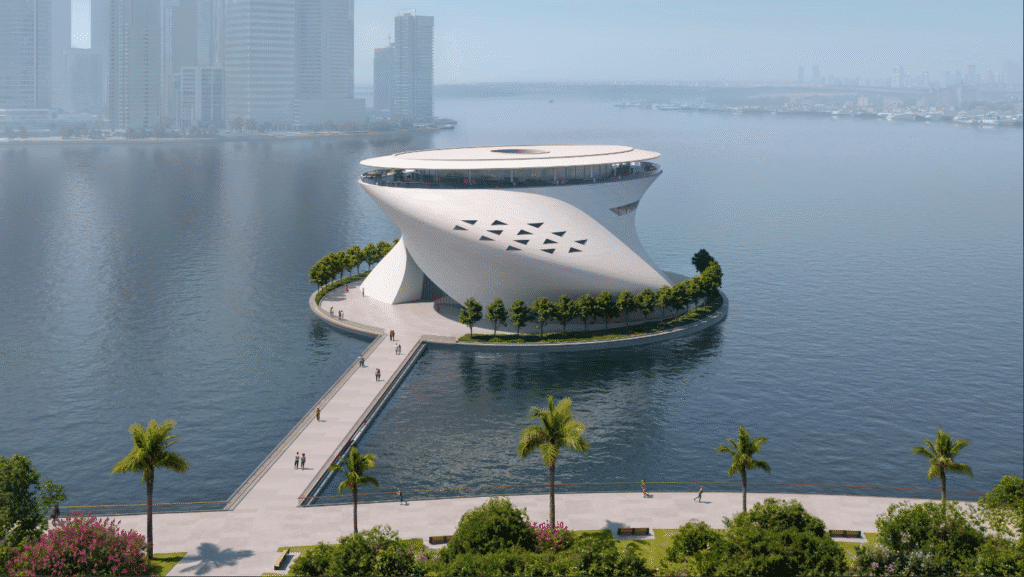
An Experience Beyond the Galleries
The Dubai Museum of Art is not only a cultural institution but also a lifestyle destination. It invites visitors to engage with art while enjoying world-class hospitality and entertainment.
A Restaurant with a View
The museum’s restaurant, located on the upper floor, will offer fine dining inspired by global cuisines. With floor-to-ceiling glass walls and open terraces, diners will enjoy breathtaking views of the creek and the city beyond, a perfect blend of culture and cuisine.
VIP Lounges and Event Spaces
Exclusive lounges and event areas will cater to private gatherings, exhibitions, and cultural celebrations. The design encourages networking and creative discussions, making the museum a preferred venue for art collectors, investors, and thought leaders.
Outdoor Installations and Public Art
The surrounding plaza and waterfront areas will feature open-air installations, sculptures, and temporary exhibitions. These outdoor spaces will extend the museum’s experience beyond its walls, turning the entire area into a public art park.
Nighttime Illumination
When the sun sets, the museum transforms into a glowing beacon on the water. Soft lighting reflects off the curved surfaces and the water below, creating a serene, almost dreamlike scene that captures Dubai’s love for spectacle and beauty.
Cultural and Economic Significance
The Dubai Museum of Art represents more than architectural beauty; it’s a cornerstone of Dubai’s long-term cultural and economic strategy. The project aligns with the city’s vision to build a creative economy where innovation, design, and art drive growth.
Boosting the Creative Economy
By providing opportunities for artists, curators, educators, and creative professionals, DUMA strengthens Dubai’s ecosystem of innovation. It will attract global talent, encourage creative entrepreneurship, and provide a platform for regional voices to reach international audiences.
Reviving Heritage Through Modern Design
While the museum looks forward to the future, it remains deeply rooted in the city’s heritage. The themes of water, pearl, and circular unity pay homage to Dubai’s maritime history and its role as a crossroads of trade and culture.
Promoting Tourism
The museum is set to become a must-visit destination for travelers from around the world. With its iconic design and diverse cultural offerings, it will attract tourists seeking authentic, meaningful experiences, adding a new dimension to Dubai’s tourism landscape.
Inspiring Global Partnerships
The Dubai Museum of Art is expected to collaborate with major international institutions for traveling exhibitions and artist residencies. These partnerships will strengthen Dubai’s role as a bridge between the East and the West in the global art community.
A Museum Designed for the Future
The Dubai Museum of Art is not just a symbol of the present; it’s built with the future in mind. Sustainability, technology, and innovation are at the core of its design and operations.
Sustainable Architecture
The museum’s structure is designed to reduce environmental impact. Natural light is used extensively to minimize energy consumption, while water-cooling techniques help regulate the building’s temperature. The surrounding water also acts as a natural reflective barrier, enhancing efficiency.
Smart Technology
Digital innovation is deeply integrated into the museum experience. Visitors will be able to use interactive screens, augmented reality, and mobile apps to learn more about artworks, participate in guided tours, and even create their own digital interpretations.
Adaptable Spaces
The galleries are built with flexibility in mind. Modular walls and adjustable lighting systems allow the museum to easily host different types of exhibitions, from classic paintings to immersive digital art.

Dubai’s Growing Art Scene
The opening of the Dubai Museum of Art comes at a time when the city’s art scene is flourishing. Events like Art Dubai, Dubai Design Week, and the rise of creative districts such as Alserkal Avenue have already put the city on the global art map. The addition of DUMA cements Dubai’s position as a serious player in the international art world.
The museum will work in harmony with these existing initiatives, creating a network of cultural experiences that promote learning, appreciation, and artistic excellence. Together, they form the foundation of a city that values creativity as much as commerce.
An Experience for Everyone
What makes the Dubai Museum of Art truly special is its inclusivity. Whether you’re an artist, a collector, a student, or simply a curious visitor, DUMA offers something for everyone.
Art lovers can explore world-class exhibitions and discover new perspectives.
Families can enjoy educational programs that make art fun and accessible for children.
Tourists can experience Dubai’s culture beyond shopping malls and skyscrapers.
Professionals can attend workshops, conferences, and events that foster collaboration and innovation.
Every visit to the Dubai Museum of Art promises inspiration, reflection, and a renewed sense of connection to the city’s cultural heartbeat.
Challenges and the Road Ahead
As with any large-scale cultural project, the Dubai Museum of Art will face challenges, from operational logistics to maintaining consistent programming quality. However, Dubai’s proven track record in executing visionary projects gives confidence that DUMA will rise to these challenges and continue evolving.
The museum’s success will depend not only on its architecture but also on the richness of its content. To thrive, it must remain dynamic, inclusive, and responsive to global artistic trends while staying true to its local roots.
Conclusion: The Beating Heart of a Creative City
The Dubai Museum of Art is more than just a building; it’s a declaration of intent. It represents Dubai’s belief that culture and creativity are as essential to progress as innovation and technology. The museum stands as a new symbol of the city’s identity: modern yet rooted, global yet local, ambitious yet human.
As the sun sets over Dubai Creek and the museum’s curved façade glows in the water’s reflection, it becomes clear that this is not only a landmark but a legacy. A space where art, architecture, and imagination merge to shape the city’s future.
For residents, artists, and visitors alike, the Dubai Museum of Art promises to be an unforgettable experience, a celebration of beauty, creativity, and the enduring spirit of Dubai.
Do follow UAE Stories on Instagram
Read Next – Dubai Museum of Art Launched by Sheikh Mohammed as a Stunning Landmark for Global Culture

